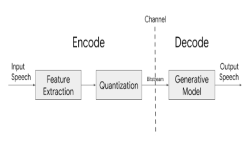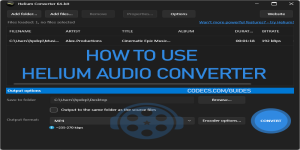Voice communication is an essential aspect of our connected world, but it can be challenging in low-bandwidth networks.
To address this issue, two innovative voice codecs have been developed recently, Lyra and EnCodec, which offer high-quality voice communication over low-bandwidth networks.
Lyra is a voice codec developed by Google that uses a machine learning-based approach to predict the speech signal, resulting in high-quality audio at low bitrates. It is designed to operate at bitrates as low as 3 kbps, making it ideal for low-bandwidth applications like mobile devices and video conferencing.
Lyra is built on a deep neural network architecture that is trained on a large dataset of speech signals. This training enables the codec to accurately predict the speech signal, resulting in high-quality audio that is free from noise and distortion. The codec is also highly scalable, making it suitable for a variety of applications.
EnCodec, on the other hand, is a voice codec developed by Meta (formerly Facebook Reality Labs) that uses advanced psychoacoustic modeling to compress audio data.
It is designed to operate at bitrates as low as 2 kbps and is ideal for low-bandwidth communication applications. EnCodec uses a perceptual audio coding approach that takes into account the characteristics of human hearing to reduce the amount of data that needs to be transmitted.
This approach results in high-quality audio that is free from artifacts and noise. The codec is highly optimized for low-latency applications and is suitable for a wide range of devices, from low-power IoT devices to high-end audio equipment.
Both Lyra and EnCodec are highly innovative codecs that offer high-quality voice communication over low-bandwidth networks. They are ideal for applications like mobile devices, video conferencing, and IoT devices.
While Lyra is built on a machine learning-based approach, EnCodec uses advanced psychoacoustic modeling, making them unique in their design and approach.
Both codecs are highly scalable and are optimized for low-latency applications, making them ideal for real-time voice communication.
As low-bandwidth communication becomes increasingly important in our connected world, codecs like Lyra and EnCodec are poised to play a major role in enabling high-quality voice communication over low-bandwidth networks.
Their innovative approaches to audio compression and their ability to operate at very low bitrates make them ideal for a wide range of applications.












How to Download HEVC Video Extension for Free
actually worked, made my day better icl
Read More →Best Player for Subtitles (2025 Guide)
@P.A. Blok You're right, thanks for the feedback! We've updated the guide to clarify that VLC does auto-detect ...
Read More →How to Play HEVC Files in VLC Media Player (2...
@VanguardLH You're right, it'll be corrected. Thanks for pointing it out!
Read More →